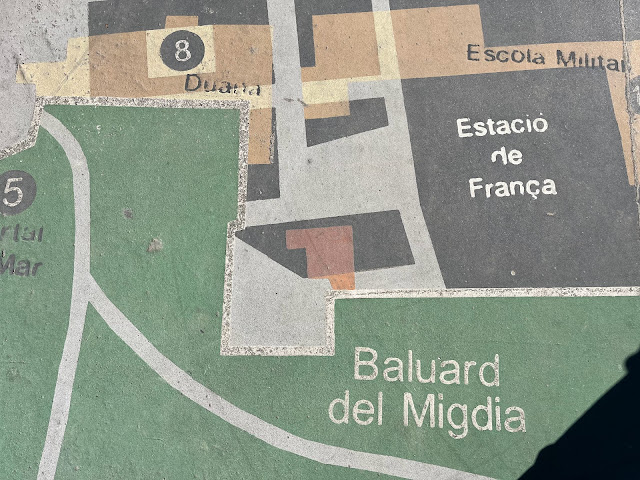Paris v. Barcelona
Our last stop as digital nomads is Barcelona. We have been a number of times before, and we are trying to get full days of work in while we're here, so we haven't spent much time at the normal tourist sites. We have an Airbnb in the Eixample, and have mostly been just ... living here, going to local restaurants, taking picnic lunches to nearby parks, and so forth. (I will say, as an aside, though, that there might be a good reason for us to take some time to see tourist sites. Glenn and I first saw the very incomplete Sagrada Familia in 1988. We came back to see it 30 years later, in 2018 or 2019, and were amazed how much progress had been made! I'm not sure why I was shocked that they would be able to accomplish a lot in 30 years, but I guess I'm not used to thinking of major tourist sites as anything other than static entities, frozen in time.)
I imagine, though, that this visit to Barcelona marks the only time when we have been in both Paris and Barcelona so close together. (I can't, for instance, recall any previous European trip when we visited both Barcelona and Paris, so visits to one city would have been very separated in time.) This is all to say that I'm surprised that I never noticed how the two cities really invite head-to-head comparisons before.
There are so many similarities. Both cities have Roman origins, of course. Both still have some elements from the Middle Ages that are well preserved and incorporated into the infrastructure of the city. Both underwent massive renewals in the 19th Century and have, as a result, large quarters characterized by wide, tree-lined boulevards. Those more modern areas have beautiful and distinctive 5- or 6- or 7-story residential buildings with businesses on the ground floor. Both have a vibrant street cafe and bar culture. Both are known for delicious food and wine, and interesting food culture in general. Both have internationally revered art and design communities. Both have huge and famous cathedrals as, perhaps, their main point of interest for tourists. Both are, in fact, tourist meccas (perhaps for all of those reasons above). And overall, the outward behavior of the residents--oiling the gears of society with les politesses, for instance--seem similar. "Bonjour" becomes "Hola," "gracias" is as ubiquitous as "merci," and so on.
So, of course, I have been searching around for interesting differences. I haven't spent enough time in Barcelona to say for sure, but I get the sense here of a sort of underdog mentality. Perhaps that is true all over Spain or maybe just Barcelona. Perhaps it has something to do the Catalan separatist movement and the sense that their language and culture and autonomy is something that they always need to fight for. Paris does not usually strike me as having an inferiority complex.
And there are many little things I have noticed: I find the architecture a little more interesting in Barcelona. Seafood is more central to the cuisine here, whereas, meat is central in Paris. The weather is quite different, of course. But, really, fundamental differences between the two cities were not jumping out at me.
And then today, while having a picnic near the Arc de Triomf (yes, Barcelona has one, too), an interesting difference fell into my lap. I commented to Glenn about how ridiculous and wasteful it is when rulers feel the need to build huge monuments to military victories. I did note that I preferred the aesthetics of this one more than the one in Paris. (It is built mostly from brick, with some high-relief marble sculptures incorporated into the structure.) He looked it up on Wikipedia and found that Barcelona's Arc de Triomf was, in fact, not built to commemorate a military victory. It was built as a gateway for the 1888 World's Fair and has imagery welcoming nations for their visit to Barcelona. That is, in my opinion, a much nicer reason to build a big, fancy arc. Chalk one up for Barcelona.




Comments
Post a Comment